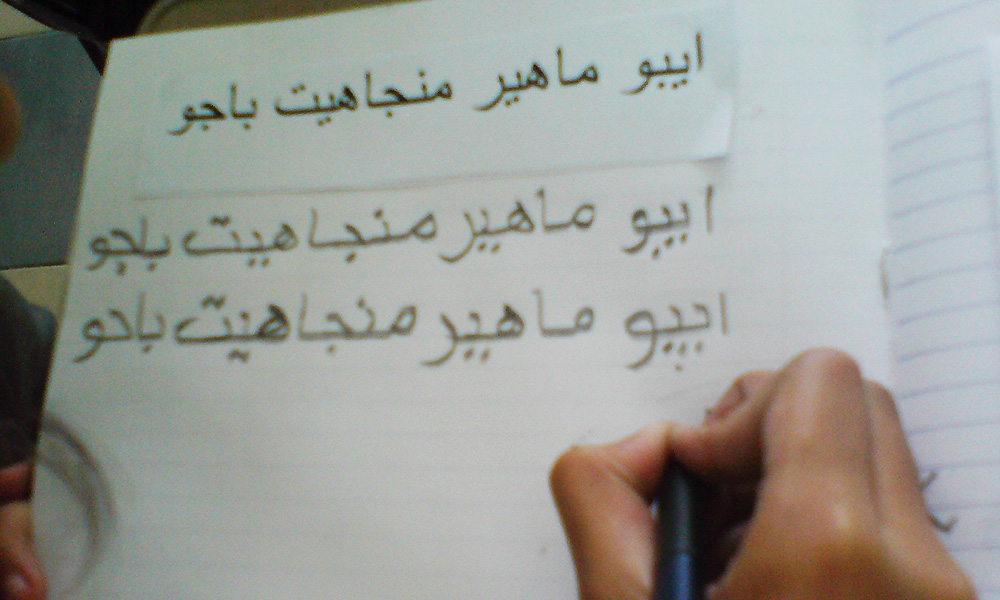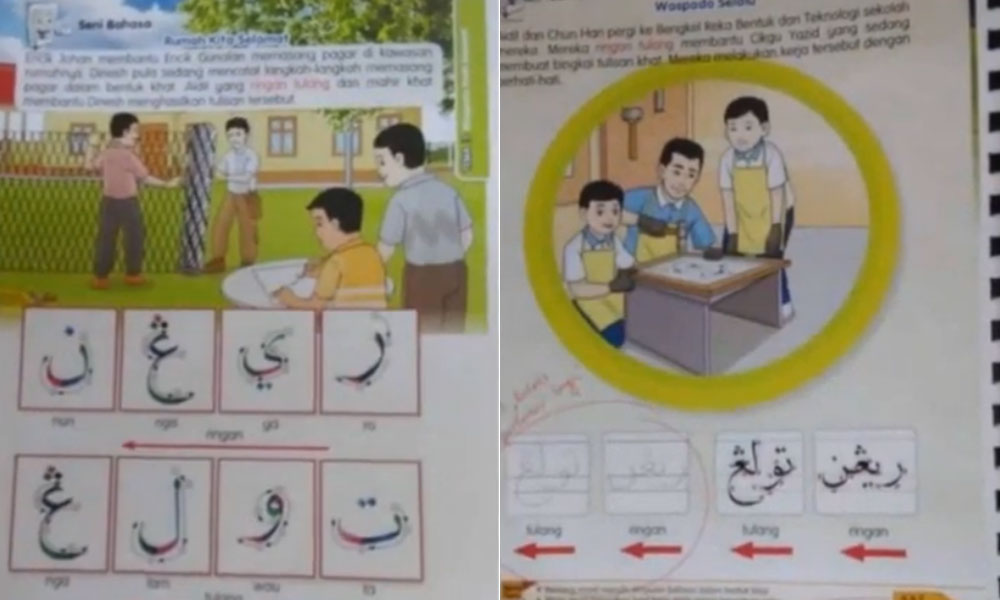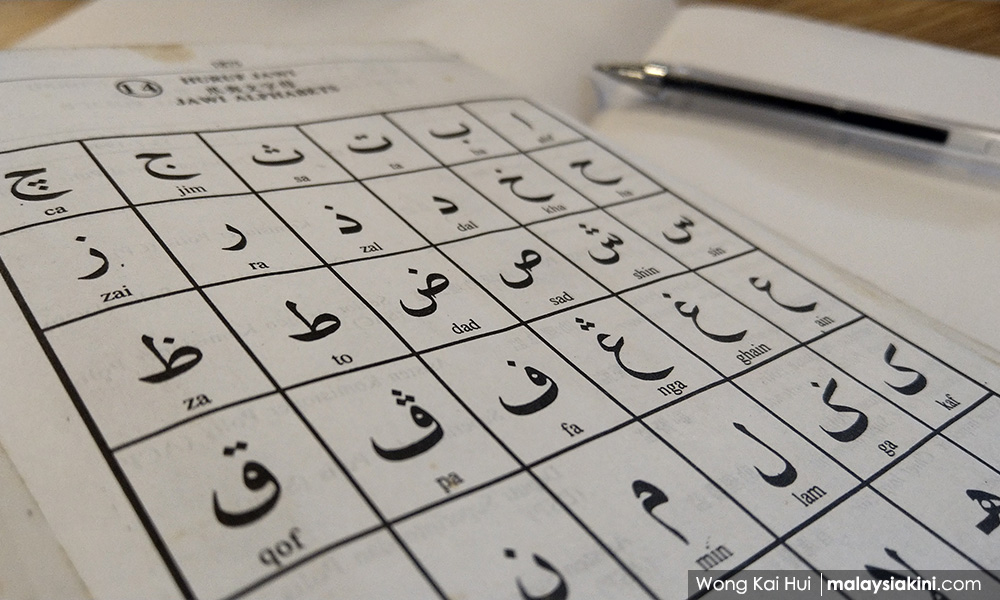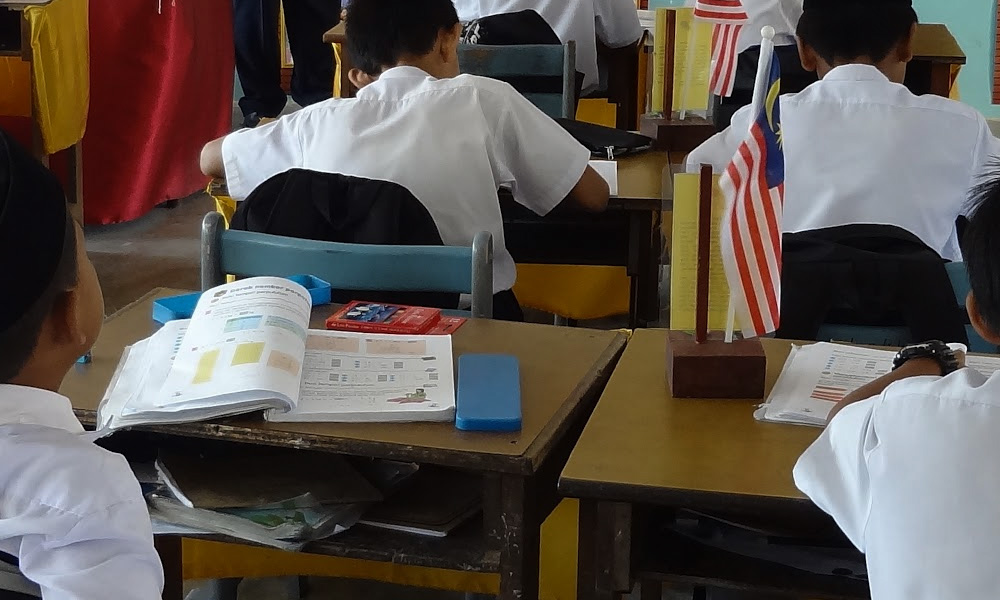
KINIGUIDE | The introduction of seni khat or calligraphy in the Bahasa Malaysia curriculum for Standard 4 students has drawn backlash from the civil society organisations and politicians.
But how will it be introduced? Are the criticisms justified? In this instalment of KiniGuide, we hope to give you some facts and context about the contentious issue.
Do primary school children need to learn an additional 'language'?
Some worry that children who study in national-type schools (vernacular schools, or Sekolah Jenis Kebangsaan [SJK]) are already studying three languages and will become overburdened with the introduction of a new language.
This is a misunderstanding of the issue. The fact is that Jawi is a script for the Malay language; it is not a language, and it is not a new subject.
According to the Standard Curriculum for Primary Schools (KSSR) for SJK Standard 4 Bahasa Melayu, the Ministry of Education aims to develop pupils' ability to listen, speak, read, write and also to learn language arts (aspek seni bahasa) and grammar.
The introduction of seni khat is one of the ways to learn language arts. Apart from that, there are also the learning of idioms (peribahasa), poems (sajak), lyrics (lirik lagu) and stories.
In short, the calligraphy segment is just a small activity during the Bahasa Malaysia class. It is neither a whole chapter nor a new subject.
How much of "khat" do the students have to learn? What is the content?
According to Deputy Education Minister Teo Nie Ching, the contentious draft Bahasa Malaysia textbook comprises 162 pages for 24 chapters.
There are small activities related to language arts in every chapter. There four types of language art activities - namely storytelling, poem reading, singing, and calligraphy. Each type of language art activity accounts for six chapters.
Of the 162 pages in the Bahasa Malaysia textbook, only six pages will be dedicated to khat.
The contentious textbook is still a draft and has yet to be printed or published. The Ministry of Education refused to provide a copy when approached by Malaysiakini.

The ministry held a town hall meeting in July and met with the representatives from Chinese and Tamil education groups. However, photography was prohibited during the meeting.
According to the latest revision of KSSR for SJK Year 4 Bahasa Melayu dated April 2018, the students will need to learn how to write the simpulan bahasa (proverbs) in khat and also recognise and pronounce the sound of the Jawi alphabets they write.
According to a source who attended the town hall session, some pages of the textbook taught pupils to write simpulan bahasa in Jawi.
For example, there are activities in the textbook that require the students to learn to write the simpulan bahasa “ringan tulang” (hardworking) in Jawi, which comprises eight Jawi alphabets.
The students need to know how to pronounce the sound of each alphabet and practice writing the Jawi script along a dotted line.
Calligraphy language art activities are expected to happen five to six times throughout the school year.
What is the relation between Jawi and the Malay language ?
The script and writing system of the Malay language have gone through several changes over the centuries and Jawi was one of the systems adopted in the past.
The script is adapted from the Arabic script with some alphabets added and is likewise written from right to left.
The Malay writing system in widespread use today is the romanised script based on the Latin alphabets. It is known as the Rumi script and was introduced into Nusantara in the 16th century.
In fact, the earliest writing systems for the Malay language were adapted from those used to write Sanskrit, which originated from India.
From the 8th century to the 13th century, the Old Malay language (Bahasa Melayu Kuno) was written using various writing systems such as Rencong, Pallava, and the Kawi writing systems.
All of these were derived from Brahmic scripts that had spread to Nusantara along with Hinduism and Buddhism at the time.
The Jawi script was introduced into Nusantara with the arrival and spread of Islam in the 1300s. As the Jawi script is more effective in aiding understanding of religious texts such as the Al-Quran dan Hadith, it was widely adopted and supplanted the Brahmic-based systems.
After Malaysia’s independence, the implementation of the National Language Acts 1963/67 stipulated that the Rumi script was the script of the national language while at the same time, the use of the Jawi script would not be prohibited.
“The script of the national language shall be the Rumi script: provided that this shall not prohibit the use of the Malay script, more commonly known as the Jawi script, of the national language,” reads Section 9 of the National Language Acts.

Was 'khat' for schoolchildren introduced by the new government?
According to the official website of the Ministry of Education's Curriculum Development Division (BPK), the last review of KSSR Bahasa Melayu for Standard 4 was done in 2017, while the latest version of the KSSR document is dated April 2018 – one month before Pakatan Harapan won the 14th general election.
"The language arts aspect refers to the beauty, elegance, and power (keindahan, kehalusan dan kebahasaan) of the Malay language that students need to understand and master. Learning the language arts includes the ability to understand, express and appreciate beautiful language," the standard curriculum reads.
"Students in Level 2 (referring to Standards 4 to 6) will be exposed to the art of calligraphy through the writing of simpulan bahasa. This learning is expected to stimulate students' interest in calligraphy."
"Through this aspect of learning, students will produce and present creative works of various genres orally and in writing with a variety of interesting techniques. The language arts aspect also promotes fun learning."
If the standard curriculum was reviewed two years ago, why has it become an issue now?
On July 25, Sinchew Daily published a special report on its front page quoting an anonymous school principal as saying that the school’s Malay language teachers had gone for training. The teaching guide that the teachers got from the training shows that Jawi script calligraphy has been included in the curriculum.
Although the exact content in the textbook was not clear, the teaching guide reportedly mentions that it aims to develop art appreciation through Jawi calligraphy, but the guide did not dwell on the grammar or application of the Jawi script.
On the same day, the Education Ministry issued a statement explaining that the introduction of khat art refers to "script art or calligraphy in Bahasa Malaysia" and not "Jawi script".
The Education Ministry also stressed that the calligraphy will not be a subject for examinations.
The next day, the Education Ministry then held a town hall event and stressed that the policy was not finalised and was subject to further discussion. The ministry would look into the matter after gathering public opinion.
A few pages of the draft for the new textbook were shown to the attendees during the public engagement event. It was learned that the pages shown were actually to teach students to write simpulan bahasa in the Jawi script.
The reason why the ministry's previous statement claimed that it was not "Jawi script" is unknown.
Why is the basis of the opposition towards this?
After the issue came to light, plans to introduce Jawi calligraphy in the textbook received brickbats from some education groups and politicians.
Some opponents viewed that learning Jawi calligraphy would only add to the students’ and teachers’ workload and would only increase pressure but not fun and enjoyment.
Dong Jiao Zong, which is part of the Chinese education movement, said it had no issues with cultivating an appreciation of Malay calligraphy, but anything beyond that was unsuitable.
If the students have to learn to recognise and pronounce the Jawi alphabet and then practice to write it, they said it would have gone beyond appreciation and would create more burden for the students.
Some opponents argued that since the official script for Bahasa Malaysia is the romanised script, there was no instrumental or practical value in learning Jawi calligraphy as it did not help to improve Bahasa Malaysia and was not in line with teaching goals.
The former deputy education minister and MCA president Wee Ka Siong criticised it, saying that learning the Jawi script would not help students improve their learning of Bahasa Malaysia. If the government wants to cultivate an appreciation for the beauty of calligraphy, it should be included in the art class and not Bahasa Malaysia, he said during a press conference on July 31.
Meanwhile, some opposing the institutionalisation of the Jawi script were concerned that this would turn into a policy of assimilation. They believe that the government can encourage people to appreciate and learn the Jawi script on their own, but not impose it as a matter of policy through the education system.

Pahang assemblyperson Chow Yu Hui initiated a petition to object to the plan. Thirteen state assemblypersons, 14 DAP Youth leaders and grassroots leaders, and 138 DAP grassroots office-bearers have endorsed it.
Chow said that in Malaysia's political context, the Jawi script has been politicised as a racial tool by PAS and institutionalising it as part of the agenda of conservative groups in the country.
Citing the mandatory use of Jawi script for signboards in Kelantan and Terengganu, he claimed that the introduction of Jawi calligraphy would not cultivate its appreciation but instead would present a slippery slope in undermining multiculturalism in Malaysia.
Two of the assemblypersons have since withdrawn their support for the petition.
What other opinions are there on the issue?
Some viewed that there was nothing untoward in appreciating and learning the traditional script of the national language as the students are also learning Chinese calligraphy and cursive writing.
They say the textbook, with only six pages, was only meant to introduce the artistic aspects of khat. DAP political education director Liew Chin Tong said since Malaysia was divided and ruled through fear, the mutual trust within its multicultural society was not strong enough.
He is of the opinion that the reason why teaching the artistic appreciation of khat had become an issue was because of a lack of confidence one’s own identity and seeing the "other" as a threat.
Meanwhile, UCSI University professor Mohamad Tajuddin Mohamad Rasdi said that while he had no objections to the new curriculum, students should know about the earlier Pallava scripts as well if the goal is to develop students’ language appreciation.
In order to learn and appreciate the artistic value of a language, it is not necessary to introduce it through a textbook, he said
Inviting guests to demonstrate the calligraphy or bringing students to a museum may be more interesting ways to learn the art, he reportedly suggested when interviewed by Sinchew Daily.
This instalment of KiniGuide is compiled by Wong Kai Hui. - Mkini


No comments:
Post a Comment
Note: Only a member of this blog may post a comment.